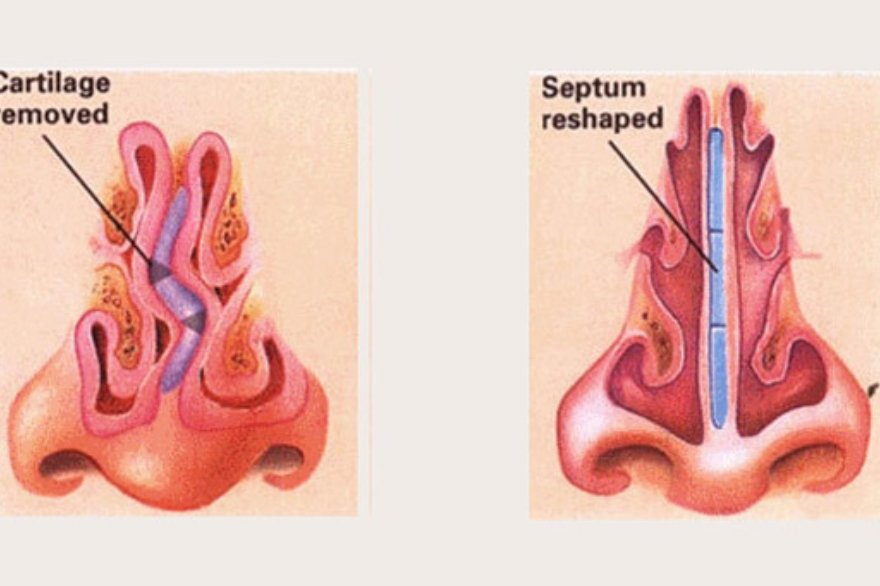All Departments
- Adenoidectomy
- Ear Infection
- Eardrum Surgery
- FESS ( Functional-Endoscopic-Sinus-Surgery)
- Mastoidectomy Surgery
- Myringotomy
- Nasal Polyps Surgery
- Septoplasty
- Sinus Surgery
- Stapedectomy
- Throat Surgery
- Thyroidectomy
- Tonsillectomy
- Tonsillectomy
- Turbinate Reduction
- Tympanoplasty
- Vocal Cord Surgery
Emergency Cases
917838450942
Turbinate Reduction
Best ENT Treatment Center for Turbinate Reduction Surgery
One of India’s top and biggest suppliers of surgical treatment is Doxtreat. It collaborates with some of the top ENT facilities in India to offer all of its patients cutting-edge ear, nose, and throat care at reasonable costs. The sophisticated ear procedures performed at Doxtreat, including turbinate reduction, tympanoplasty, myringotomy, etc., are done without the patient experiencing any issues or hearing loss.
Doxtreat also offers the patient additional support services like full insurance and hospital paperwork assistance, simple payment methods like cost-free EMI, etc. Moreover, it offers the patient cab service for pick-up and drop-off from the clinic on the day of operation as well as free meals while they are in the hospital.

When is turbinate reduction required?
Turbinate reduction surgery may be required when a person is experiencing significant symptoms related to turbinate hypertrophy that are not responsive to other forms of treatment. Some common symptoms of turbinate hypertrophy include:
Nasal congestion and blockage
Difficulty breathing through the nose
Chronic sinus infections
Snoring and sleep apnea
Headaches
Facial pressure and pain
Postnasal drip
Reduced sense of smell

What are the benefits of turbinate reduction surgery?
Turbinate reduction surgery can provide several benefits for individuals with turbinate hypertrophy who are experiencing troublesome symptoms. Some of the potential benefits of this surgery include:
Improved nasal breathing: One of the primary benefits of turbinate reduction surgery is that it can improve airflow through the nasal passages, making it easier to breathe through the nose.
Reduced congestion: By reducing the size of the turbinates, turbinate reduction surgery can help to alleviate chronic nasal congestion and blockage.
Reduced snoring and sleep apnea: Turbinate reduction surgery may be effective in reducing or eliminating snoring and sleep apnea, which can significantly improve the quality of sleep and overall health.
Improved sense of smell: In some cases, turbinate hypertrophy can cause a reduced sense of smell. By reducing the size of the turbinates, turbinate reduction surgery may be able to improve a person’s sense of smell.
Reduced need for medications: For individuals who rely on medications, such as nasal sprays or decongestants, to manage their symptoms, turbinate reduction surgery may be able to reduce or eliminate the need for these medications.
After the surgery, the patient is taken to a recovery room to be monitored as the anaesthesia wears off. Pain medication may be prescribed to help manage any discomfort after the surgery. It is important to follow all postoperative instructions provided by the healthcare provider, including avoiding strenuous activity and resting the voice for a period of time. Most patients can return to normal activities within a few days to a few weeks after the surgery, depending on the type of procedure performed.

What happens during turbinate reduction treatment?
Turbinate reduction treatment is a medical procedure that is typically performed by an ENT specialist. The exact procedure may vary depending on the specific case and the technique used, but in general, the steps of the surgery are as follows:
Anesthesia: The patient will be given general anesthesia to ensure that they are comfortable and pain-free during the surgery.
Access: The surgeon will gain access to the turbinates by inserting a small endoscope into the nasal cavity. This allows them to visualize the turbinates and surrounding structures.
Reduction: The surgeon will then use a variety of tools, such as a microdebrider, radiofrequency probe, or laser, to reduce the size of the turbinates. The technique used will depend on the surgeon’s preference and the specific case.
Reduced discomfort: Surgery to remove scar tissue or growths on the vocal cords can reduce discomfort or pain associated with the condition.
Hemostasis: After the turbinates have been reduced, the surgeon will use techniques to control any bleeding and promote healing.
Closure: Once the procedure is complete, the surgeon will close any incisions and place packing or a splint in the nasal cavity to help support the tissues as they heal.
The exact length of the surgery will depend on the specific case, but it typically takes around 30 minutes to an hour. In some cases, the procedure can be performed on an outpatient basis, which means the patient can go home the same day. Recovery time can vary depending on the individual case, but most patients can return to normal activities within a week or two after the surgery.
What to expect after turbinate reduction surgery?
After turbinate reduction surgery, it is normal to experience some discomfort and swelling in the nasal passages. The specific recovery experience will depend on the individual case and the technique used during the surgery. However, here are some general things to expect:
Pain and Discomfort: It is common to experience some pain, discomfort, or pressure in the nose and surrounding areas after the surgery. This can usually be managed with pain medication and should improve over time.
Access: The surgeon will gain access to the turbinates by inserting a small endoscope into the nasal cavity. This allows them to visualize the turbinates and surrounding structures.
Nasal Congestion: It is normal to experience some nasal congestion and discharge for a few days after the surgery. This is due to the swelling and healing of the tissues in the nasal passages.
Breathing: You may find it easier to breathe through your nose immediately after the surgery, but there may be some temporary obstruction due to swelling. It can take several weeks for the full effects of the surgery to be felt.
Bleeding:
Some minor bleeding may occur in the first few days after surgery. If you experience any heavy bleeding or bleeding that does not stop after a few minutes of pressure, contact your doctor.
Follow-up Appointments: You will likely need to have follow-up appointments with your doctor to monitor your recovery progress and remove any packing or sutures in your nose.
It is important to follow all post-operative instructions provided by your doctor to ensure proper healing and avoid complications. If you experience any severe or unusual symptoms, contact your doctor right away.
What are risks associated with turbinate reduction surgery?
Like any surgical procedure, turbinate reduction surgery comes with some risks and potential complications. These can include:
Bleeding: Bleeding is a common risk associated with any surgery, including turbinate reduction surgery. In rare cases, it may require additional treatment or intervention.
Infection: There is a risk of infection after any surgical procedure, including turbinate reduction surgery. Antibiotics may be prescribed before or after the procedure to reduce this risk.
Scarring: In some cases, scarring may occur after the surgery. This can lead to a persistent reduction in nasal breathing ability.
Nasal Crusting: Nasal crusting may occur after the procedure and can take several weeks to resolve. This may cause some discomfort and obstruction.
Recurrence of Symptoms: In some cases, turbinate hypertrophy may recur after the surgery. This can happen if the cause of the hypertrophy is not addressed or if the initial procedure was not effective.
Adverse Reaction to Anaesthesia: Anaesthesia can cause complications such as allergic reactions or breathing problems in rare cases.
Change in Nasal Structure: In rare cases, the surgery may alter the shape of the nose or nasal structure, leading to cosmetic changes.
It is important to discuss any potential risks or complications with your doctor before the procedure. Additionally, following all pre-operative and post-operative instructions can help reduce the risk of complications and improve the outcome of the procedure.
